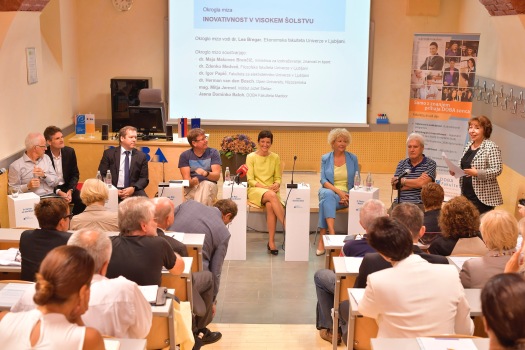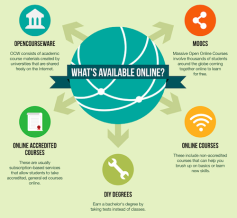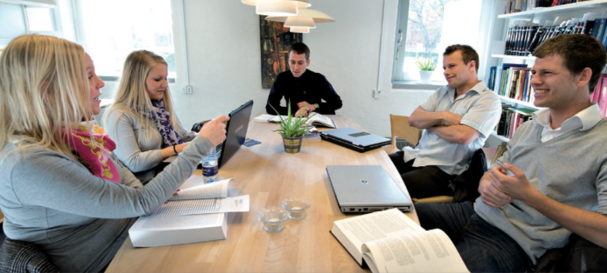The number of participants in higher education is growing rapidly worldwide. Apart from the growing number of adult participants, the variety of students in general is increasing. However, the organization of universities is hardly able to deal with this growing variety. Students can chose between campus or distance-teaching universities and between full-time or part-time studies. A thorough redesign must offer relief.
The value of personal contact between students and teachers
Whether students are enrolled in a campus or a distance-teaching university, they spend most of their time on independent study: At home, at work, on the train or in the library. The difference between the two types of universities is the way they support these activities. The majority of campus universities are deploying a combination of lectures and seminars. Distance-teaching universities offer a sequence of assignments, which students have to submit in order to receive feedback. When it comes to getting acquainted with knowledge or theoretical insights, both ways are effective. However supporting independent study online is definitely outperforming lectures and seminars with respect to efficiency and scalability[1].
 The value-added of campus universities should rather be sought in teaching methods where the degree of interaction between students and teachers goes beyond incidental questioning and answering in lectures and seminars. Think of tutorials (meetings a few students with a tutor), projects (intensive meetings of students, occasionally attended by a teacher), working groups in problem-based learning (10-15 students, who meet with a tutor regularly) and some types of training. Activities like these outperform the capabilities of education online with respect to the support of aims like critical thinking and problem solving. Unfortunately, the domination of lectures and seminars prevents that campus universities take advantage of this potential value.
The value-added of campus universities should rather be sought in teaching methods where the degree of interaction between students and teachers goes beyond incidental questioning and answering in lectures and seminars. Think of tutorials (meetings a few students with a tutor), projects (intensive meetings of students, occasionally attended by a teacher), working groups in problem-based learning (10-15 students, who meet with a tutor regularly) and some types of training. Activities like these outperform the capabilities of education online with respect to the support of aims like critical thinking and problem solving. Unfortunately, the domination of lectures and seminars prevents that campus universities take advantage of this potential value.
The value of self-paced learning
The majority of educational programs – campus-based or distance teaching – are starting once or twice a year and their length is fixed. For the rapidly growing group of students who combine study with a job, music or sport, a family and a social life, this system is untenable. Students differ with respect to the time they can spend on their study each week, to the distribution of the available time during the year, to the speed at which they learn and to the knowledge and skills they already possess.
Fortunately, a growing number of distance teaching institutions is able to deal with differences between students with respect to the time they need to complete their studies. These institutions offer unlimited opportunity to enrol as well[2]. In order to stimulate that students prioritize their study as much as possible, they offer active mentoring and count a fixed monthly fee under the motto learn as much as you can. Unfortunately, the majority of online programs fail to realize the benefits of flexibility.
Distance teaching and campus-based education both have potential advantages, whose benefits are not fully used. However, students will benefit best, if these advantages are made available for all of them.
The value of blending learning
Education online is perfectly well equipped for enabling educational aims like the acquisition of knowledge and the development of theoretical insights. With respect to this aim, campus-based universities can economize by substituting lectures and seminars by online teaching methods. As mentioned before, some types of face-to-face interaction between teachers and students are superior in the realization of educational aims like critical thinking and problem solving. All students – in campuses or online – will benefit from occasional participation in tutorials, projects, small group meetings or intense trainings like boot camps. For some students it will be feasible to be on campus daily, for others one day every week suits best or they prefer a few residential weeks a year. By offering a variety of blends of face-to-face meetings and activities online, university campuses could become nodes in educational networks and be able to host many more students than at present. The functional combination of independent study with both face-to-face and online support is representing the best of both worlds at lower costs.
The value of freedom what or where to learn
The body of scientific knowledge is doubling every nine years, disciplinary borders get blurred and best research is interdisciplinary. As a consequence, the disciplines that emerged in the 19th century have become obsolete. Nonetheless, they still dominate the educational landscape. It is time to exchange traditional subjects for broad fields of study that offer ample opportunity to chose introductory and advanced course and projects.
At the same time, students will increasingly obtain their degree by visiting several universities within their country or abroad. Thus, students take maximum advantage of the differences between institutions. In order to assess students, universities should describe their examination rules in terms of competencies to achieve instead of courses to follow.
A variety of blends of face-to-face and online activities to support students’ independent learning could become the new normal.
[1] Read my post: The lecture is the iconic symbol of wastage in higher education: http://wp.me/p3lna5-6M
[2] Self-paced learning is a common characteristic of the most innovative educational institutions in the USA. For instance, the College for America, which is a part of the Southern New Hampshire University (60,000 students) and the Western Governors University (70,000 students). See: Alana Dunagan College transformed. Five institutions leading the charge in innovation http://www.christenseninstitute.org/wp-content/uploads/2017/02/College-transformed.pdf





 The majority of contemporary universities are realizing these outcomes only partially. Research in the US has revealed that about 40% of college students did not make any progress with respect to analytical and critical thinking skills in four consecutive years
The majority of contemporary universities are realizing these outcomes only partially. Research in the US has revealed that about 40% of college students did not make any progress with respect to analytical and critical thinking skills in four consecutive years Universities can economize by flipping their classrooms radically and supporting their students in choosing appropriate open educational resources like MOOCs (= massive open online courses). At this time, MOOCs cover any part of scientific knowledge. The best scientists are involved in their development and educational technologists have designed the best visual support. The only expenses relate to delivering feedback at student’s assignments.
Universities can economize by flipping their classrooms radically and supporting their students in choosing appropriate open educational resources like MOOCs (= massive open online courses). At this time, MOOCs cover any part of scientific knowledge. The best scientists are involved in their development and educational technologists have designed the best visual support. The only expenses relate to delivering feedback at student’s assignments.





